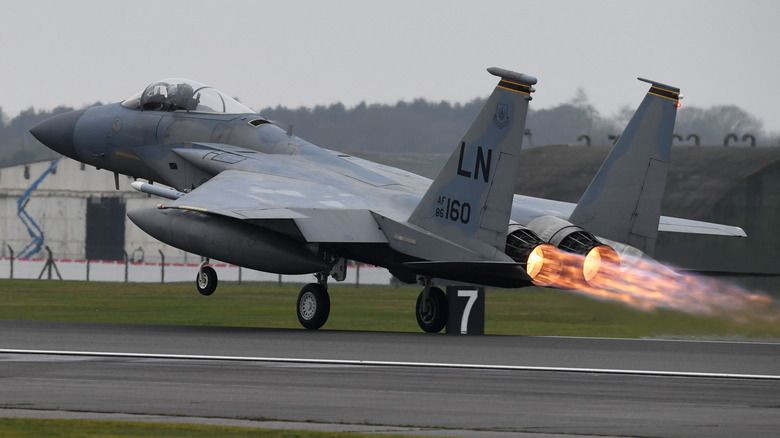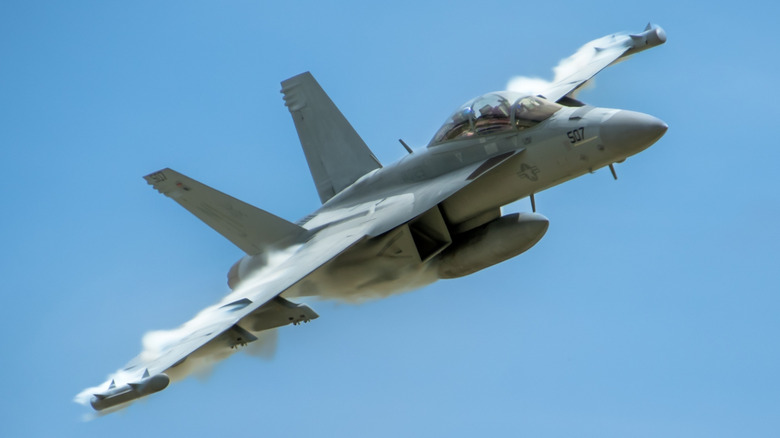F-15 Eagle Top Speed: How Fast Is The Fighter Jet?
The F-15 Eagle entered service with the United States Air Force in 1979, and is still used by the U.S. and its many allies. The fighter is an export aircraft, and many countries operate F-15 jets in their military. If you've ever wondered why a plane designed and built in the 1970s continues to operate, it's because the F-15 is one of the premier fighters currently serving. To date, no F-15 has been lost in combat despite operating in hotly contested areas like Israel.
All modern fighter aircraft are fast, but the F-15 is an outlier, reaching speeds in excess of Mach 2.5 (1,918 mph). That's ridiculously fast for any aircraft, and it's the fighter's speed that makes it one of the planet's deadliest combat aircraft.
This is why F-15s remain in production and operation around the globe, and that's unlikely to change in the immediate future. Like any modern military machine, the F-15 currently in operation is vastly different from the original. It has gone through extensive modernizations and refits over the years, resulting in the current production model, the F-15EX Eagle II fighter jet, made by Boeing. This is the fastest version of the F-15 that's ever taken to the skies, so it's no wonder America's allies are keen on acquiring them.
The F-15 can really move
The F-15EX Eagle II is the most advanced version of the aircraft ever built, and it's relatively new. It entered service in July 2024, so it's not blacking out the skies over enemy territory just yet. As of May 2025, only eight have been built, but more are on the way. President Donald Trump announced in late April that the new F-15 would come to replace the aging A-10 Warthogs with 21 new aircraft.
The F-15EX Eagle II is powered by two General Electric F100-PW-229 turbofans with afterburners, providing a combined 58,000 pounds of thrust. Those engines can push the F-15EX to incredible speed. While it can sustain flight at Mach 2.5, under the right conditions it can come close to reaching Mach 3 (2,302 mph). That said, the jet's "not-to-exceed" speed is Mach 2.9 (2,225 mph). Of course, flying at such speeds is costly on the fuel reserves, which is why the F-15 and other speedy aircraft typically reserve the capability for short bursts to close the distance between targets or move quickly out of the way of an approaching threat.
The F-15EX is the next in a long line of aircraft that make up the storied history of the F-15 Eagle, a legend of the skies. The fighter's popularity and its ability to continue operating among more advanced aircraft is a testament to its capabilities. While older F-15s have been retired, the president's announcement about procuring more suggests production will continue into the future.

